 They adopted their name after Buffalo Bill brought his Wild West Show to Paris in 1905. They lived wild, criminal lives and could be recognized by the distinctive clothes they wore.
They adopted their name after Buffalo Bill brought his Wild West Show to Paris in 1905. They lived wild, criminal lives and could be recognized by the distinctive clothes they wore. The Apaches took their clothes very seriously and were reputedly willing to kill for the right pair of shoes.
The Apaches took their clothes very seriously and were reputedly willing to kill for the right pair of shoes.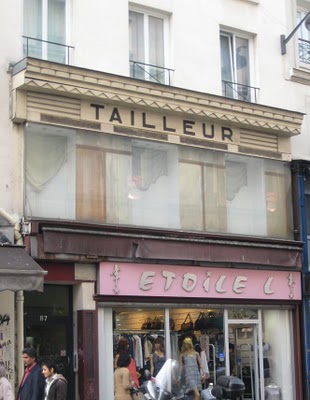 The shop on Rue du Faubourg du Temple, above, where they bought their distinctive fashions still bears the original Tailleur sign.
The shop on Rue du Faubourg du Temple, above, where they bought their distinctive fashions still bears the original Tailleur sign. Another idea is that In 1902, two journalists in Paris, Arthur Dupin and Victor Morris, started calling “les Apaches” the petty criminals and thugs of the Rue de Lappe
Another idea is that In 1902, two journalists in Paris, Arthur Dupin and Victor Morris, started calling “les Apaches” the petty criminals and thugs of the Rue de Lappe  and pimps of Belleville, which differ from the underworld and criminals by their style appearances.
and pimps of Belleville, which differ from the underworld and criminals by their style appearances.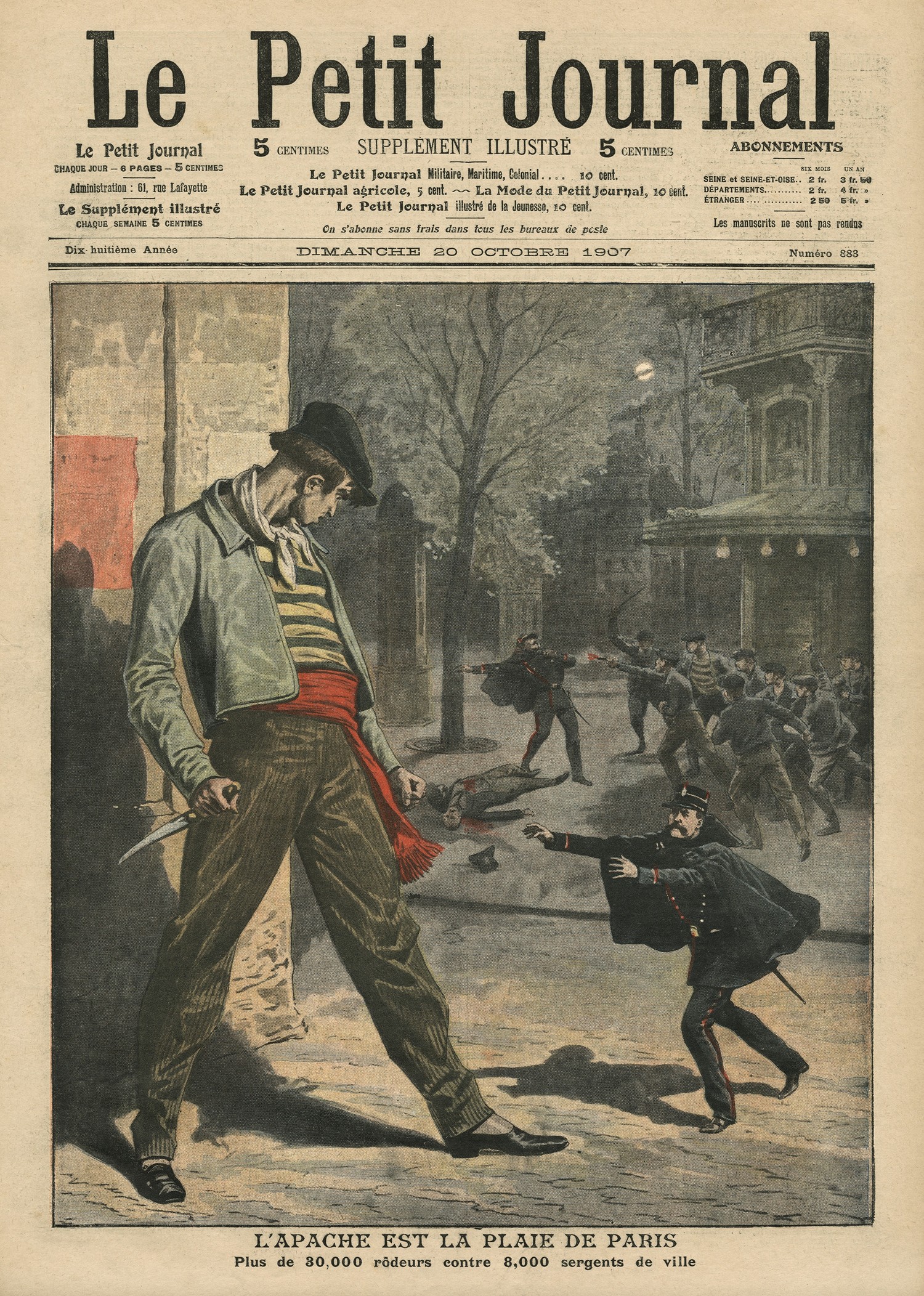 Originating from the upper districts of eastern Paris,as Ménilmuche
Originating from the upper districts of eastern Paris,as Ménilmuche  (Ménilmontant) or Belleville, they invest at night the Bastille district or Mouff (Mouffetard’s street).
(Ménilmontant) or Belleville, they invest at night the Bastille district or Mouff (Mouffetard’s street). Each gang was dressed slightly differently, often wearing something such as a red scarf that would be both a sign of belonging and a means of identification in other territories. However, certain elements were the same in all gangs.
Each gang was dressed slightly differently, often wearing something such as a red scarf that would be both a sign of belonging and a means of identification in other territories. However, certain elements were the same in all gangs. All wore a certain type of trouser, tight at the knees and flared at the bottom, known as a Bénard. These were named after the tailor who made them, a certain Auguste Bénard, and the word is still used in Parisian slang today to designate a pair of trousers (bénard, ben’ or bénouze).
All wore a certain type of trouser, tight at the knees and flared at the bottom, known as a Bénard. These were named after the tailor who made them, a certain Auguste Bénard, and the word is still used in Parisian slang today to designate a pair of trousers (bénard, ben’ or bénouze). On their heads there was always a hat of some description, generally something flat in the form of a sailor’s cap,
On their heads there was always a hat of some description, generally something flat in the form of a sailor’s cap, but it was what was put on the feet that was the most important.
but it was what was put on the feet that was the most important. Claude Dubois in his depiction of the Bastille area of Paris (La Bastoche, 1997) describes the ideal pair:
Claude Dubois in his depiction of the Bastille area of Paris (La Bastoche, 1997) describes the ideal pair:“Le comble de la coquetterie apache étant les bottines jaunes à bouts pointus cirées de frais avec des boutons dorés”. (The height of Apache vanity was a pair of freshly polished pointed yellow boots with golden buttons).
 The Apaches travel in groups, with accoutrements that enable them stand out: semi-open jacket over a rumpled shirt, pants tall concealing a 22 inch blade, scarf and cap
The Apaches travel in groups, with accoutrements that enable them stand out: semi-open jacket over a rumpled shirt, pants tall concealing a 22 inch blade, scarf and cap  screwed over a shaved neck.Les Apaches were members of a Parisian Belle Époque underworld subculture.
screwed over a shaved neck.Les Apaches were members of a Parisian Belle Époque underworld subculture.
The Belle Époque or La Belle Époque . French for "Beautiful Era") was a period in French history
 that is conventionally dated as starting in 1890 and ending when World War I began in 1914.
that is conventionally dated as starting in 1890 and ending when World War I began in 1914. Occurring during the era of the Third French Republic (Beginning 1870), it was a period characterized by optimism, peace at home and in Europe, new technology and scientific discoveries.
Occurring during the era of the Third French Republic (Beginning 1870), it was a period characterized by optimism, peace at home and in Europe, new technology and scientific discoveries.  The peace and prosperity in Paris allowed the arts to flourish, and many masterpieces of literature, music, theater, and visual art gained recognition.
The peace and prosperity in Paris allowed the arts to flourish, and many masterpieces of literature, music, theater, and visual art gained recognition.  The Belle Époque was named, in retrospect, when it began to be considered a "golden age" in contrast to the horrors of World War I.
The Belle Époque was named, in retrospect, when it began to be considered a "golden age" in contrast to the horrors of World War I.
In the newly rich United States, emerging from the Panic of 1873,
 the comparable epoch was dubbed the Gilded Age. In the United Kingdom, the Belle Époque overlapped with the late Victorian era and the Edwardian era, and in Germany, the Belle Époque coincided with the reign of Kaiser Wilhelm II.
the comparable epoch was dubbed the Gilded Age. In the United Kingdom, the Belle Époque overlapped with the late Victorian era and the Edwardian era, and in Germany, the Belle Époque coincided with the reign of Kaiser Wilhelm II.
The French public's nostalgia for the Belle Epoque period was based largely on the peace and prosperity connected with it in retrospect. Two devastating world wars and their aftermath made the Belle Epoque appear to be a time of joie de vivre (joy of living) in contrast to 20th century hardships.
 In contrast to the early 20th century, the Belle Epoque was a time of relative peace and prosperity. It was also a period of stability that France enjoyed after the tumult of the early years of the French Third Republic, beginning with France's defeat in the Franco-Prussian War, the Paris Commune, and the fall of General Georges Ernest Boulanger.
In contrast to the early 20th century, the Belle Epoque was a time of relative peace and prosperity. It was also a period of stability that France enjoyed after the tumult of the early years of the French Third Republic, beginning with France's defeat in the Franco-Prussian War, the Paris Commune, and the fall of General Georges Ernest Boulanger.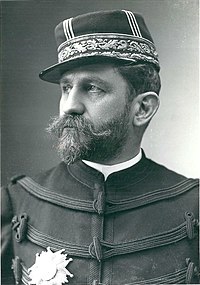 The defeat of Boulanger, and the celebrations tied to the 1889 World's Fair in Paris, launched an era of optimism and affluence. French imperialism was in its prime. It was a cultural center of global influence,
The defeat of Boulanger, and the celebrations tied to the 1889 World's Fair in Paris, launched an era of optimism and affluence. French imperialism was in its prime. It was a cultural center of global influence, and its educational, scientific and medical institutions were at the leading edge of Europe.
and its educational, scientific and medical institutions were at the leading edge of Europe.The Exposition Universelle of 1889 was a World's Fair held in Paris, France from 6 May to 31 October 1889.

It was held during the year of the 100th anniversary of the storming of the Bastille, an event traditionally considered as the symbol for the beginning of the French Revolution.
 The fair included a reconstruction of the Bastille and its surrounding neighborhood, but with the interior courtyard covered with a blue ceiling decorated with fleur-de-lys and used as a ball room and gathering place.
The fair included a reconstruction of the Bastille and its surrounding neighborhood, but with the interior courtyard covered with a blue ceiling decorated with fleur-de-lys and used as a ball room and gathering place.
The 1889 Exposition covered a total area of 0.96 km², including the Champ de Mars,
 the Trocadéro, the quai d'Orsay,
the Trocadéro, the quai d'Orsay,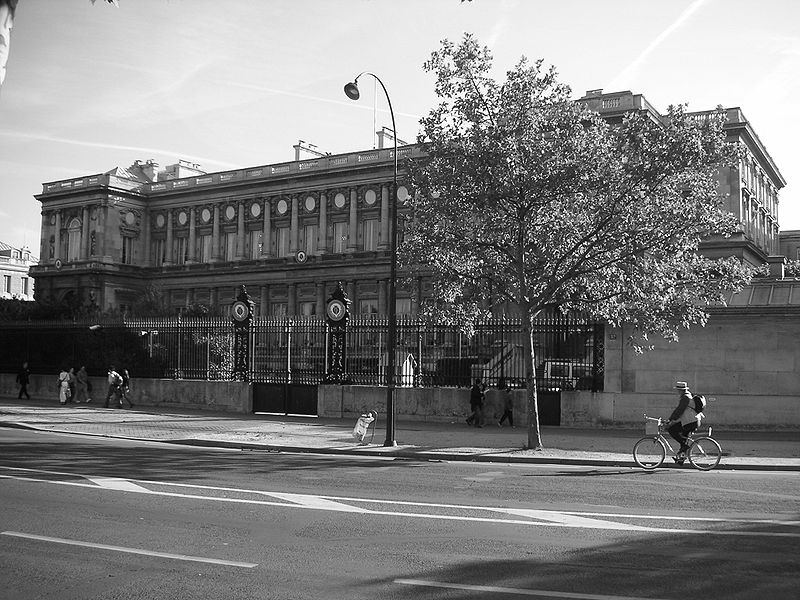 a part of the Seine and the Invalides esplanade. Transport around the Exposition was partly provided by a 3 kilometre (1.9 mi) 600 millimetre (2 ft 0 in) gauge railway by Decauville. It was claimed that the railway carried 6,342,446 visitors in just six months of operation. Some of the locomotives used on this line later saw service on the
a part of the Seine and the Invalides esplanade. Transport around the Exposition was partly provided by a 3 kilometre (1.9 mi) 600 millimetre (2 ft 0 in) gauge railway by Decauville. It was claimed that the railway carried 6,342,446 visitors in just six months of operation. Some of the locomotives used on this line later saw service on the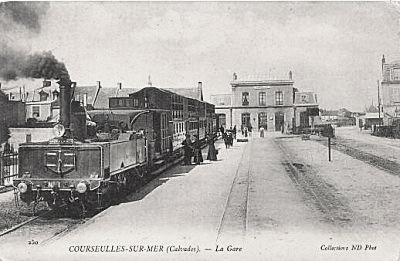 Chemins de Fer du Calvados
Chemins de Fer du Calvados It was not entirely the reality of life in Paris or in France, however. France had a large economic underclass who never experienced much of the Belle Epoque's wonders and entertainments. Poverty remained endemic in Paris' urban slums and rural peasantry for decades after the Belle Epoque ended. The Dreyfus Affair exposed the dark realities of French anti-Semitism and government corruption. Conflicts between the government and the Roman Catholic Church were regular during the period.
It was not entirely the reality of life in Paris or in France, however. France had a large economic underclass who never experienced much of the Belle Epoque's wonders and entertainments. Poverty remained endemic in Paris' urban slums and rural peasantry for decades after the Belle Epoque ended. The Dreyfus Affair exposed the dark realities of French anti-Semitism and government corruption. Conflicts between the government and the Roman Catholic Church were regular during the period.Those who were able to benefit from the prosperity of the era were drawn towards new forms of light entertainment during the Belle Epoque, and the Parisian bourgeoisie, or the successful Industrialists called nouveau-riches, became increasingly influenced by the habits and fads of the city's elite social class, known popularly as Tout-Paris ("all of Paris", or "everyone in Paris"). The Casino de Paris opened in 1890. For Paris' less affluent public, entertainment was provided by cabarets, bistros and music halls.

The Moulin Rouge cabaret is a Paris landmark still open for business today.
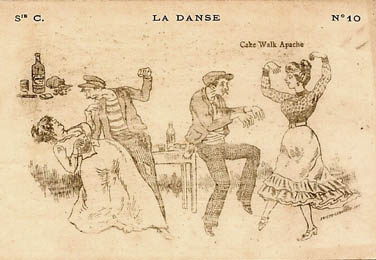 The Folies Bergère was another landmark venue. Burlesque performance styles were more mainstream in Belle Epoque Paris than in more staid cities of Europe and America. Liane de Pougy
The Folies Bergère was another landmark venue. Burlesque performance styles were more mainstream in Belle Epoque Paris than in more staid cities of Europe and America. Liane de Pougy , dancer, socialite and courtesan, was well known in Paris as a headline performer at top cabarets.
, dancer, socialite and courtesan, was well known in Paris as a headline performer at top cabarets. Belle Epoque dancers such as La Goulue and Jane Avril were Paris celebrities, who modelled for Toulouse-Lautrec's iconic poster art.
Belle Epoque dancers such as La Goulue and Jane Avril were Paris celebrities, who modelled for Toulouse-Lautrec's iconic poster art. The Can-can dance was a popular 19th-century cabaret style that appears in Toulouse-Lautrec's posters from the era.
The Can-can dance was a popular 19th-century cabaret style that appears in Toulouse-Lautrec's posters from the era.
The Eiffel Tower, built to serve as the grand entrance to the 1889 World's Fair held in Paris, became the accustomed symbol of the city, to its inhabitants and to visitors from around the world. Paris hosted another successful World's Fair in 1900, the Exposition Universelle (1900). Paris had been profoundly changed by the French Second Empire reforms to the city's architecture and public amenities. Haussmann's renovation of Paris changed its housing, street layouts, and green spaces. The walkable neighbourhoods were well-established by the Belle Epoque.
Cheap coal and cheap labor contributed to the cult of the orchid
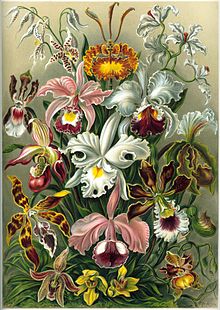 and made possible the perfection of fruits grown under glass, as the apparatus of state dinners extended to the upper classes. Exotic feathers and furs were more prominently featured in fashion than ever before, as haute couture was invented in Paris, the center of the Belle Époque, where fashion began to move in a yearly cycle. In Paris, restaurants such as Maxim's Paris
and made possible the perfection of fruits grown under glass, as the apparatus of state dinners extended to the upper classes. Exotic feathers and furs were more prominently featured in fashion than ever before, as haute couture was invented in Paris, the center of the Belle Époque, where fashion began to move in a yearly cycle. In Paris, restaurants such as Maxim's Paris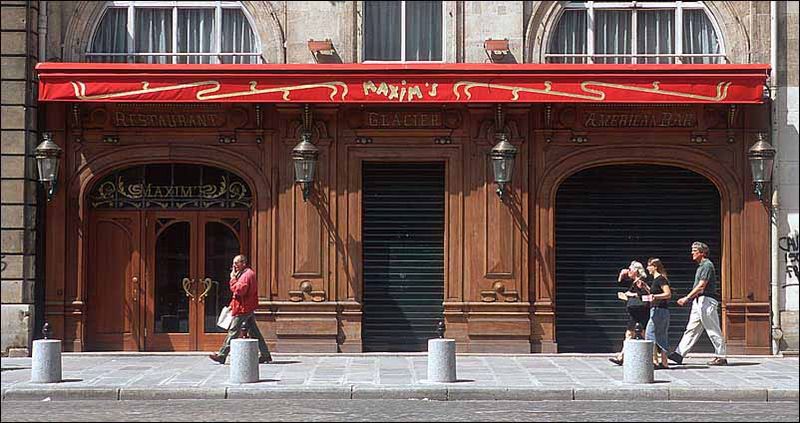 achieved a new splendor and cachet as places for the rich to parade. Maxim's Paris was arguably the city's most exclusive restaurant. Bohemian lifestyles gained a different glamour, pursued in the cabarets of Montmartre.Maxim's was founded as a bistro in 1893 by Maxime Gaillard, formerly a waiter. It became one of the most popular and fashionable restaurants in Paris under its next owner, Eugene Cornuché. Cornuché gave the dining room its Art Nouveau decor and made sure that it was always filled with beautiful women. Cornuché was accustomed to say: "An empty room... Never! I always have a beauty sitting by the window, in view from the sidewalk."
achieved a new splendor and cachet as places for the rich to parade. Maxim's Paris was arguably the city's most exclusive restaurant. Bohemian lifestyles gained a different glamour, pursued in the cabarets of Montmartre.Maxim's was founded as a bistro in 1893 by Maxime Gaillard, formerly a waiter. It became one of the most popular and fashionable restaurants in Paris under its next owner, Eugene Cornuché. Cornuché gave the dining room its Art Nouveau decor and made sure that it was always filled with beautiful women. Cornuché was accustomed to say: "An empty room... Never! I always have a beauty sitting by the window, in view from the sidewalk."French cuisine continued to climb in the esteem of European gourmets during the Belle Epoque. The word "ritzy" was invented during this era, referring to the posh atmosphere and clientele of the Hôtel Ritz Paris. The head chef and co-owner of the Ritz, Auguste Escoffier
 , was the pre-eminent French chef during the Belle Epoque. Escoffier modernized French haute cuisine, also doing much work to spread its reputation abroad with business projects in London in addition to Paris. Champagne was perfected during the Belle Époque. The alcoholic spirit Absinthe was cited by many Art Nouveau artists as a muse and inspiration and can be seen in much of the artwork of the time.
, was the pre-eminent French chef during the Belle Epoque. Escoffier modernized French haute cuisine, also doing much work to spread its reputation abroad with business projects in London in addition to Paris. Champagne was perfected during the Belle Époque. The alcoholic spirit Absinthe was cited by many Art Nouveau artists as a muse and inspiration and can be seen in much of the artwork of the time.Large public buildings such as the Opéra Garnier
 devoted enormous spaces to interior designs as Art Nouveau show places. After the mid-19th century, railways linked all the major cities of Europe to spa towns like Biarritz
devoted enormous spaces to interior designs as Art Nouveau show places. After the mid-19th century, railways linked all the major cities of Europe to spa towns like Biarritz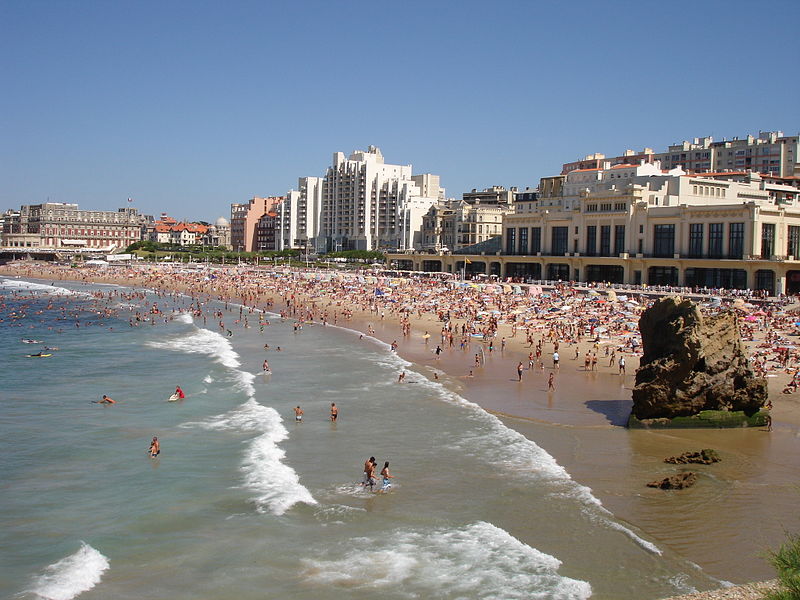 and Deauville; their carriages were rigorously divided into first-class and second-class, but the super-rich now began to commission private railway coaches, as exclusivity as well as display was a hallmark of opulent luxury.
and Deauville; their carriages were rigorously divided into first-class and second-class, but the super-rich now began to commission private railway coaches, as exclusivity as well as display was a hallmark of opulent luxury.Politics
The years between the Franco-Prussian War and World War I were characterized by unusual political stability in western and central Europe. Although tensions between the French and German
 governments persisted as a result of the French loss of Alsace-Lorraine to Germany in 1871, diplomatic conferences, including the Congress of Berlin in 1878, the Berlin Congo Conference in 1884, and the Algeciras Conference in 1906, mediated disputes that threatened the general European peace. Indeed, for many Europeans in the Belle Époque period, transnational, class-based affiliations were as important as national identities, particularly among aristocrats. An upper-class gentleman could travel through much of Western Europe without a passport and even reside abroad with minimal bureaucratic regulation. World War I, mass transportation, the spread of literacy, and various citizenship concerns changed this.
governments persisted as a result of the French loss of Alsace-Lorraine to Germany in 1871, diplomatic conferences, including the Congress of Berlin in 1878, the Berlin Congo Conference in 1884, and the Algeciras Conference in 1906, mediated disputes that threatened the general European peace. Indeed, for many Europeans in the Belle Époque period, transnational, class-based affiliations were as important as national identities, particularly among aristocrats. An upper-class gentleman could travel through much of Western Europe without a passport and even reside abroad with minimal bureaucratic regulation. World War I, mass transportation, the spread of literacy, and various citizenship concerns changed this.The Belle Époque featured a class structure that ensured cheap labor. The Paris Metro underground railway system joined the omnibus and streetcar in transporting the working population, including those servants who did not live in the wealthy centers of cities. One result of this was that working-class and upper-class neighborhoods might be separated by large distances.
Meanwhile, the international workers' movement also reorganized itself and reinforced pan-European, class-based identities among the classes whose labor supported the Belle Époque. The most notable transnational socialist organization was the Second International. Anarchists of different affiliations were active during the period leading up to World War I. Political assassinations and assassination attempts were still rare in France, but there were some notable exceptions, including President Marie François Sadi Carnot in 1894.
 A bomb was detonated in the Chamber of Deputies of France in 1893, causing injuries but no deaths. Terrorism against civilians occurred in 1894, perpetrated by Émile Henry, who killed a cafe patron and wounded several others.
A bomb was detonated in the Chamber of Deputies of France in 1893, causing injuries but no deaths. Terrorism against civilians occurred in 1894, perpetrated by Émile Henry, who killed a cafe patron and wounded several others.France enjoyed relative political stability at home during the Belle Epoque. The sudden death of President Felix Faure while in office took the country by surprise, but had no destabilizing effect on the government. The most serious political issue to face the country during this period was the Dreyfus Affair. Captain Alfred Dreyfus was wrongly convicted of treason, with fabricated evidence from French government officials. Anti-Semitism directed at Dreyfus, and tolerated by the general French public in everyday society, was a central issue in the controversy and the court trials that followed. Public debate surrounding the Dreyfus Affair grew to an uproar after the publication of J'accuse, a letter sent to newspapers by prominent novelist Emile Zola, condemning government corruption and French anti-Semitism. The Dreyfus Affair consumed the interest of the French for several years and it received heavy newspaper coverage.
In terms of European politics, there were very few regime changes in Europe, the major exception being Portugal, which experienced a republican revolution in 1910. However, tensions between working-class socialist parties, bourgeois liberal parties, and landed or aristocratic conservative parties did increase in many countries, and it has been claimed that profound political instability belied the calm surface of European politics in the era. In fact, militarism and international tensions grew considerably between 1897 and 1914, and the immediate prewar years were marked by a general armaments competition in Europe. Additionally, this era was one of massive overseas colonialism, known as the New Imperialism. The most famous portion of this imperial expansion was the Scramble for Africa.

.
 invented removable pneumatic tires for bicycles and automobiles in the 1890s. The scooter and moped are also Belle Epoque inventions.
invented removable pneumatic tires for bicycles and automobiles in the 1890s. The scooter and moped are also Belle Epoque inventions.A number of French inventors patented products with a lasting impact on modern society. After the telephone joined the telegraph as a vehicle for rapid communication, French inventor Édouard Belin developed the Belinograph, or Wirephoto, to transmit photos by telephone. The electric light began to supersede gas lighting, and neon lights were invented in France.
France was a leader of early cinema technology. The cinématographe was invented in France by Léon Bouly and put to use by Auguste and Louis Lumière, brothers who held the first film screenings in the world. The Lumière brothers made many other innovations in cinematography. It was during this era that the motion pictures were developed, though these did not become common until after World War I.
Although the aeroplane remained a fascinating experiment, France was a leader in aviation. France established the world's first national air force in 1910. Two French inventors, Louis Breguet and Paul Cornu, made independent experiments with the first flying helicopters in 1907.
It was during this era that biologists and physicians finally came to understand the germ theory of disease, and the field of bacteriology was established. Louis Pasteur
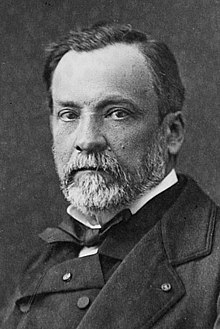 was perhaps the most famous scientist in France during this time. Pasteur developed antibiotics and a rabies vaccine. Mathematician and physicist Henri Poincaré made important contributions to pure and applied mathematics, and also published books for the general public on mathematical and scientific subjects. Marie Skłodowska-Curie worked in France, winning the Nobel Prize for Physics in 1903, and the Nobel Prize for Chemistry in 1911. Physicist Gabriel Lippmann invented integral imaging, still in use today.
was perhaps the most famous scientist in France during this time. Pasteur developed antibiotics and a rabies vaccine. Mathematician and physicist Henri Poincaré made important contributions to pure and applied mathematics, and also published books for the general public on mathematical and scientific subjects. Marie Skłodowska-Curie worked in France, winning the Nobel Prize for Physics in 1903, and the Nobel Prize for Chemistry in 1911. Physicist Gabriel Lippmann invented integral imaging, still in use today.In 1890, Vincent Van Gogh died. It was during the 1890s that his paintings achieved the admiration that had eluded them during Van Gogh's life, first among other artists, then gradually among the public. Reactions against the ideals of the Impressionists characterized visual arts in Paris during the Belle Epoque. Among the post-Impressionist movements in Paris were the Nabis, the Salon de la Rose + Croix, the Symbolist movement (in music as well as visual art), Fauvism, and early Modernism. Between 1900 and 1914, Expressionism took hold of many artists in Paris and Vienna. Early works of Cubism and Abstraction were exhibited. Foreign influences were being strongly felt in Paris as well. The official art school in Paris, the Ecole des Beaux Arts, held an exhibition of Japanese printmaking that changed approaches to graphic design, particular posters and book illustration (Aubrey Beardsley was influenced by a similar exhibit when he visited Paris during the 1890s). Exhibits of African tribal art also captured the imagination of Parisian artists at the turn of the 20th century.
Art Nouveau is the most popularly recognized art movement to emerge from the period. This largely decorative style (Jugendstil in central Europe), characterized by its curvilinear forms, become prominent from the mid-1890s and dominated progressive design throughout much of Europe. Its use in public art in Paris, such as the Paris Metro stations, has made it synonymous with the city.
Prominent artists in Paris during the Belle Epoque included post-Impressionists such as Odilon Redon, Maurice Denis, Pierre Bonnard, Edouard Vuillard, Paul Gauguin, Henri Matisse, Emile Bernard, Henri Rousseau, Henri de Toulouse-Lautrec (whose reputation improved substantially after his death), and a young Pablo Picasso.
Although Impressionism in painting began well before the Belle Epoque, it had initially been met with skepticism if not outright scorn by a public accustomed to the realist and representational art approved by the Academy. In 1890, Monet started his series Haystacks. Impressionism, which had been considered the artistic avant-garde in the 1860s, did not gain widespread acceptance until after World War I. The academic painting style, associated with the Academy of Art in Paris, remained the most respected style among the public in Paris. Artists that appealed to the Belle Époque public include
 William-Adolphe Bouguereau or the British John William Waterhouse, or the idyllic Roman scenes of Lord Leighton. More progressive tastes patronized the Barbizon school plein-air painters. These painters were associates of the Pre-Raphaelites, who inspired a generation of esthetic-minded "Souls".
William-Adolphe Bouguereau or the British John William Waterhouse, or the idyllic Roman scenes of Lord Leighton. More progressive tastes patronized the Barbizon school plein-air painters. These painters were associates of the Pre-Raphaelites, who inspired a generation of esthetic-minded "Souls".Many successful examples of Art Nouveau, with notable regional variations, were built in France, Germany, Belgium, Spain, Austria (the Vienna Secession),
 Hungary, Bohemia and Latvia. It soon spread around the world, including to Brazil, Argentina, Mexico and the United States.
Hungary, Bohemia and Latvia. It soon spread around the world, including to Brazil, Argentina, Mexico and the United States.
European literature underwent a major transformation during the Belle Époque. Literary realism and naturalism achieved new heights.
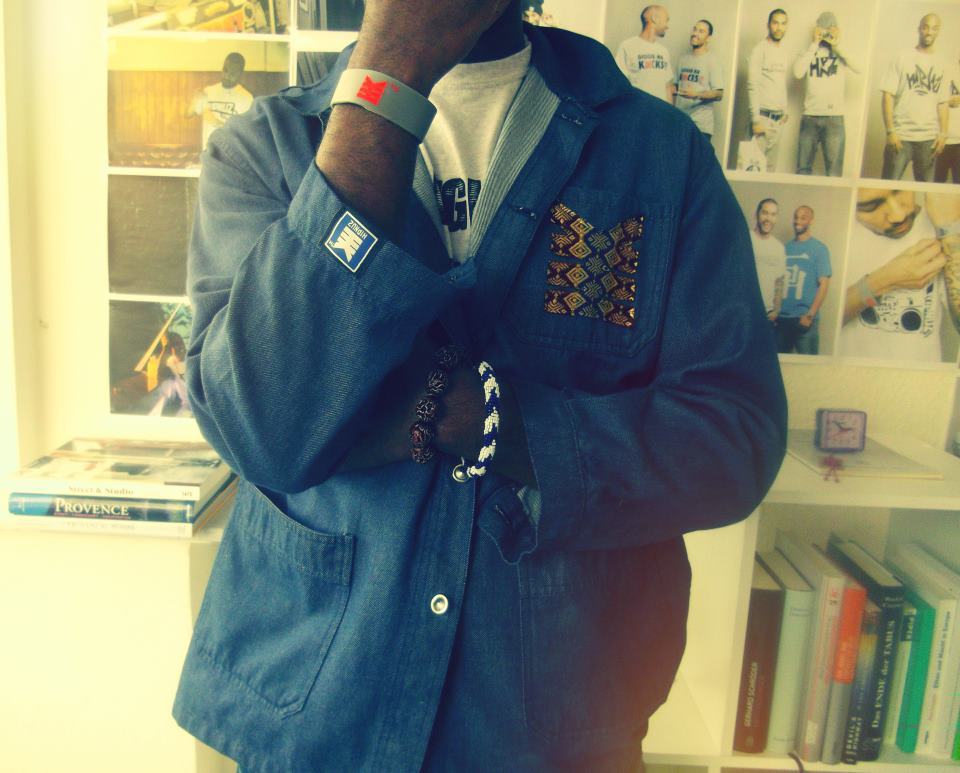 Among the most famous French realist or naturalist authors are Guy de Maupassant and Émile Zola. Realism gradually developed into modernism, which emerged in the 1890s and came to dominate European literature during the Belle Époque's final years and throughout the interwar years.
Among the most famous French realist or naturalist authors are Guy de Maupassant and Émile Zola. Realism gradually developed into modernism, which emerged in the 1890s and came to dominate European literature during the Belle Époque's final years and throughout the interwar years.  The Modernist classic In Search of Lost Time was begun by Marcel Proust in 1909, to be published after World War I. The works of German Thomas Mann had a huge impact in France as well, such as Death in Venice, published in 1912.
The Modernist classic In Search of Lost Time was begun by Marcel Proust in 1909, to be published after World War I. The works of German Thomas Mann had a huge impact in France as well, such as Death in Venice, published in 1912. Colette shocked France with the publication of the sexually frank Claudine novel series, and other works. Joris-Karl Huysmans, who came to prominence in the mid-1880s, continued experimenting with themes and styles that would be associated with Symbolism and the Decadent movement. Andre Gide, Anatole France, Alain-Fournier, Paul Bourget are among France's most popular fiction writers of the era.
Colette shocked France with the publication of the sexually frank Claudine novel series, and other works. Joris-Karl Huysmans, who came to prominence in the mid-1880s, continued experimenting with themes and styles that would be associated with Symbolism and the Decadent movement. Andre Gide, Anatole France, Alain-Fournier, Paul Bourget are among France's most popular fiction writers of the era.
Among poets, the Symbolists such as Charles Baudelaire remained at the forefront. Although Baudelaire's poetry collection Les fleurs du mal had been published in the 1850s,
 it exerted a strong influence on the next generation of poets and artists. The Decadent movement fascinated Parisians, intrigued by Paul Verlaine and above all Arthur Rimbaud,
it exerted a strong influence on the next generation of poets and artists. The Decadent movement fascinated Parisians, intrigued by Paul Verlaine and above all Arthur Rimbaud, who became the archetypal enfant terrible of France. Rimbaud's Illuminations was published in 1886,
who became the archetypal enfant terrible of France. Rimbaud's Illuminations was published in 1886, and subsequently his other works were also published, influencing Surrealists and Modernists during the Belle Epoque and after. Rimbaud's poems were the first works of free verse seen by the French public. Free verse and typographic experimentation also emerged in Un Coup de Dés Jamais
and subsequently his other works were also published, influencing Surrealists and Modernists during the Belle Epoque and after. Rimbaud's poems were the first works of free verse seen by the French public. Free verse and typographic experimentation also emerged in Un Coup de Dés Jamais N'Abolira Le Hasard by Stéphane Mallarmé, anticipating Dada and concrete poetry. Guillaume Apollinaire's
N'Abolira Le Hasard by Stéphane Mallarmé, anticipating Dada and concrete poetry. Guillaume Apollinaire's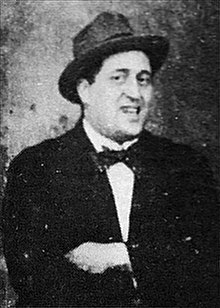 poetry introduced themes and imagery from modern life to readers.
poetry introduced themes and imagery from modern life to readers. Cosmopolis: A Literary Review had a far-reaching impact on European writers, and ran editions in London, Paris, Saint Petersburg, and Berlin.
Cosmopolis: A Literary Review had a far-reaching impact on European writers, and ran editions in London, Paris, Saint Petersburg, and Berlin.
Paris' popular bourgeois theatre was dominated by the light farces of Georges Feydeau and cabaret performances. Theatre adopted new modern methods, including Expressionism, and many playwrights wrote plays that shocked contemporary audiences either with their frank depictions of everyday life and sexuality or with unusual artistic elements.
Musically, the Belle Époque was characterized by salon music. This was not considered "serious" music but, rather, short pieces considered accessible to a general audience. In addition to works for piano solo or violin and piano, the Belle Époque was famous for its large repertory of songs (mélodies, romanze, etc.).
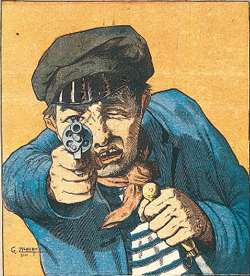 The Italians were the greatest proponents of this type of song, its greatest champion being Francesco Paolo Tosti.
The Italians were the greatest proponents of this type of song, its greatest champion being Francesco Paolo Tosti. Though Tosti's songs never completely left the repertoire, salon music generally fell into a period of obscurity. Even as encores, singers were afraid to sing them at "serious" recitals. In that period, waltzes also flourished. Operettas were also at the peak of their popularity, with composers such as Johann Strauss III, Emmerich Kalman, and Franz Lehár. Many Belle Epoque composers working in Paris are still popular today: Eric Satie, Claude Debussy, Lili Boulanger, Jules Massenet, Gabriel Fauré, and Camille Saint-Saëns and his pupil, Maurice Ravel.
Though Tosti's songs never completely left the repertoire, salon music generally fell into a period of obscurity. Even as encores, singers were afraid to sing them at "serious" recitals. In that period, waltzes also flourished. Operettas were also at the peak of their popularity, with composers such as Johann Strauss III, Emmerich Kalman, and Franz Lehár. Many Belle Epoque composers working in Paris are still popular today: Eric Satie, Claude Debussy, Lili Boulanger, Jules Massenet, Gabriel Fauré, and Camille Saint-Saëns and his pupil, Maurice Ravel.Modern dance began to emerge as a powerful artistic development in theatre. Dancer Loie Fuller appeared at popular venues such as the Folies Bergere, and took her eclectic performance style abroad as well. Sergei Diaghilev's Ballets Russes brought fame to Vaslav Nijinsky
 and established modern ballet technique. The Ballets Russes launched several ballet masterpieces, including The Firebird and Rite of Spring (sometimes causing audience riots at the same time).
and established modern ballet technique. The Ballets Russes launched several ballet masterpieces, including The Firebird and Rite of Spring (sometimes causing audience riots at the same time). Apaches were so called because
Apaches were so called because  tie rack.The red is important for les apaches
tie rack.The red is important for les apachestheir alleged savagery was compared with that attributed by Europeans
 to the Native American tribes of Apaches.
to the Native American tribes of Apaches.
The Apaches were especially associated with some districts of Paris: Belleville, la Bastille
 , La Villette
, La Villette which was also home to the famous Moulin Rouge dance hall and nightclub.
which was also home to the famous Moulin Rouge dance hall and nightclub.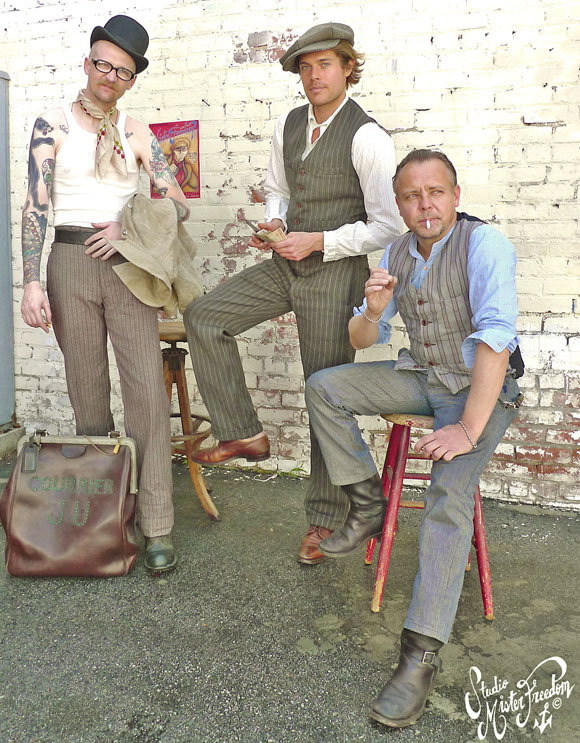
During their heyday, the prospect of being mugged or otherwise assaulted by Apache gangsters was
 especially feared by members of the emergent bourgeois middle class.
especially feared by members of the emergent bourgeois middle class. Some of the gangs used a unique type of pistol which was named the
Some of the gangs used a unique type of pistol which was named the  "Apache revolver" or "Apache
"Apache revolver" or "Apache pistol": a pinfire
pistol": a pinfire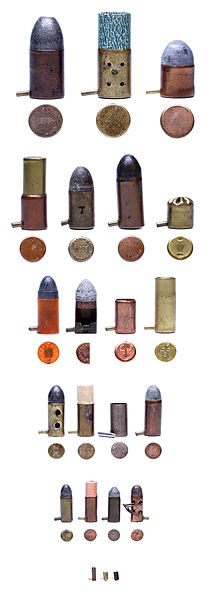 cartridge revolver with no barrel, a set of foldover brass knuckles for a handgrip, and
cartridge revolver with no barrel, a set of foldover brass knuckles for a handgrip, and a folding knife mounted right underneath the revolver drum for use as a stabbing weapon.
a folding knife mounted right underneath the revolver drum for use as a stabbing weapon. An Apache revolver is a handgun which incorporates multiple other weapons, made notorious by the French underworld figures of the early 1900s known as Les Apaches
An Apache revolver is a handgun which incorporates multiple other weapons, made notorious by the French underworld figures of the early 1900s known as Les Apaches . below old town clothing company is perfect for period with added red cravat or scarves, sideburns and thin moustache.
. below old town clothing company is perfect for period with added red cravat or scarves, sideburns and thin moustache.
The gun operates on the principle of a pepperbox revolver using a pinfire action and incorporates a
 fold-over knuckle duster forming the grip and also a rudimentary foldout, dual-edged knife.
fold-over knuckle duster forming the grip and also a rudimentary foldout, dual-edged knife.
Due to the lack of a barrel, the revolver's effective range is very limited, but since all of its
 component parts can be folded inward towards the cylinder, it was easily concealable inside a pocket. It was common to leave a bullet out of the chamber under the firing pin to prevent shooting oneself while having it concealed in a pocket or bag, as the weapon has no trigger guard or safety.
component parts can be folded inward towards the cylinder, it was easily concealable inside a pocket. It was common to leave a bullet out of the chamber under the firing pin to prevent shooting oneself while having it concealed in a pocket or bag, as the weapon has no trigger guard or safety. This weapon is not able to be aimed precisely because of its lack of front and rear sights. It also has very limited firepower due to the pistol's caliber; 7 mm is a round with very limited capabilities even when discharged from a firearm with a barrel. Despite its limited potential, the revolver proved deadly at extremely close range.
This weapon is not able to be aimed precisely because of its lack of front and rear sights. It also has very limited firepower due to the pistol's caliber; 7 mm is a round with very limited capabilities even when discharged from a firearm with a barrel. Despite its limited potential, the revolver proved deadly at extremely close range.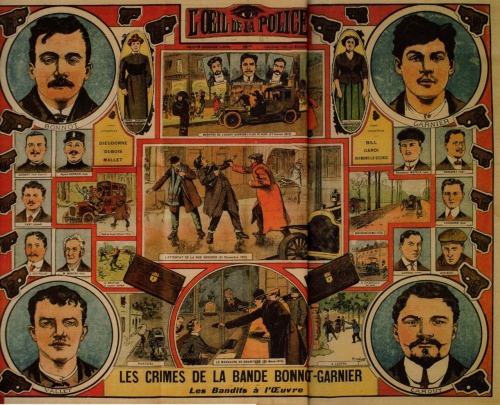
A 9 mm revolver of similar design (but no official designation) was allegedly used by British commandos during World War II, though exact statistics about production numbers and technical details have as yet remained undisclosed to the public.
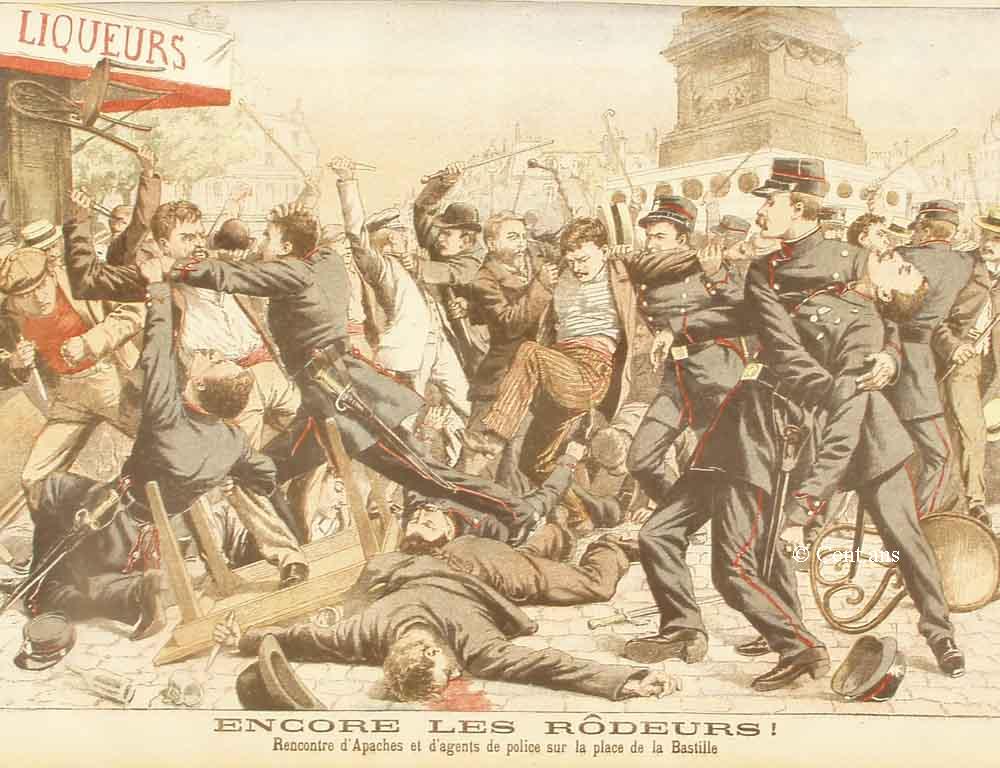
The Apaches also evolved a semi-codified collection of "tricks" used in mugging and hand-to-hand combat.
 The most famous was the coup du père François, a tactic by which a victim was stalked by several
The most famous was the coup du père François, a tactic by which a victim was stalked by several Apaches before being garroted from behind; one Apache was assigned the job of searching through the victim's pockets for any valuables, while another served as a lookout.
Apaches before being garroted from behind; one Apache was assigned the job of searching through the victim's pockets for any valuables, while another served as a lookout.Certain elements of the Apache "style" became
 apache shirt
apache shirtinfluential in French and then international popular
 old town
old townculture, including the Apache dance and Apache shirt.
Apache is a highly dramatic dance associated in popular culture with Parisian street culture in the beginning of the 20th century.
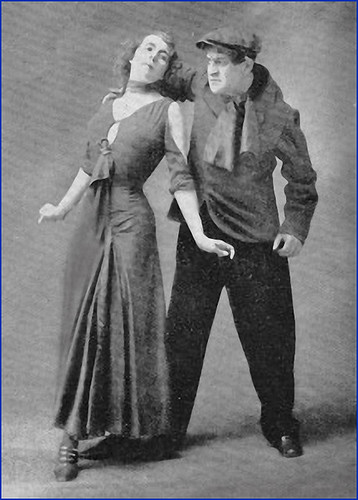 The name of the dance (pronounced ah-PAHSH, not uh-PATCH-ee,
The name of the dance (pronounced ah-PAHSH, not uh-PATCH-ee,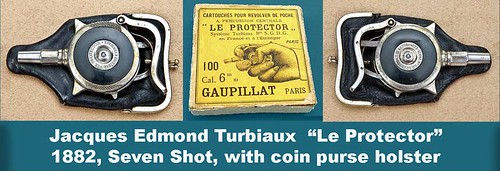 like the English pronunciation of the Native American tribe) is taken from a Parisian street gang, which in turn was named for the American Indian tribe due to the perceived savagery of the hoodlums. The term came to be used more generally to refer to certain vicious elements of the Paris underworld at the beginning of the 20th century.
like the English pronunciation of the Native American tribe) is taken from a Parisian street gang, which in turn was named for the American Indian tribe due to the perceived savagery of the hoodlums. The term came to be used more generally to refer to certain vicious elements of the Paris underworld at the beginning of the 20th century.The dance is sometimes said to reenact a violent "discussion" between a pimp and a prostitute. It includes mock slaps and punches, the man picking up and throwing the woman to the ground, or lifting and carrying her while she struggles or feigns unconsciousness. Thus, the dance shares many features with the theatrical discipline of stage combat. In some examples, the woman may fight back.

The famous French 10-part 7-hour silent film Les Vampires (1915, re-released on DVD in 2005) is
 about an Apache gang named "the Vampires". Emilio Ghione's La Mort series of films—of which only I topi grigi (The grey rats, 1918), Anime buie (Dark souls, 1916) and a fragment of Dollari e Fracks (Dollars and dinner jackets, 1919) still exist—was about the adventures of a 'noble' Apache in the Parisian underworld and further afield.
about an Apache gang named "the Vampires". Emilio Ghione's La Mort series of films—of which only I topi grigi (The grey rats, 1918), Anime buie (Dark souls, 1916) and a fragment of Dollari e Fracks (Dollars and dinner jackets, 1919) still exist—was about the adventures of a 'noble' Apache in the Parisian underworld and further afield.
The popular Italian pulp fiction writer Aristide Marino Gianella also wrote a serial novel called Gli apache parigini, which was first available in short installments and then within a complete volume.
The Paris of the Belle Époque (1900s) saw the emergence of a certain type of street outcasts. They lived in secret dens in the seedy and dimmed outskirts of the City of Lights, abhorred honest labor, hunted the Faubourgs and Quartier de Halles, and danced in local Guinguettes and dives, decked out in flamboyant outfits.

They were called Les Apaches…
Issued from the French lower working class, with a lack of education and absence of Future, they regrouped in loosely organized neighborhood gangs. Abiding by their own hoodlum code of honor, they woke up late, spoke the obscure slang Jare, and wore specific flashy clothes. Their dandy accoutrement combined with intimidating attitudes imposed both respect and fear from the Parisians and their police.
For 30 years, Paris’ Apaches gangs marked their territories by terrorizing honest bourgeois citizens, committing petty larceny, pimping and street fighting their lives away. For those who had ducked the knife and the bullet that bared their name or the ravage of the “Grande Guerre” (WW1), it was the inevitable outcome of Biribi or the Bagne de Cayenne.
In the 1920’s one a many high society dame was spotted mingling with charismatic Apache groups in local Java dance halls, letting her hair down in a famous Dance Apache, immortalized later by Hollywood (“Charlie Chan in Paris”, 1935) and several Broadway Shows. The French movie Casque d’Or (1953) relates a true story of a famous Apache event that took place in 1905.
Bourgeois newspapers of the period and universal fascination with the underworld turned the reign of the Apaches into a mix of myth and imagery that will forever mark the Paris of the 1900s to 1930s…
These are the premises and backdrop of the MISTER FREEDOM® x SUGAR CANE Spring 2011 Collection.
Influenced by early French haberdashery and work clothes, European tailoring and Old World silhouettes, this new venture is a departure from the “Americana” inspiration of previous seasons. After extensive research and development we turned a corner onto an unfamiliar avenue (Rue de la Grande Truanderie?) to offer this new look of the Old World…
The collection includes:
* Fancy shirting in printed calico fabrics, cotton jacquard, indigo “Métis” (cotton/linen weave) and pastel color dyed cotton pique.
* French workman outfits in cotton/linen indigo “Métis” twill and indigo ticking.
* Fancy city clothes in intricately woven stripe cotton fabrics.
apache gun
 You could draw your gun discretely, literally palming it without drawing any attention to yourself. The diminutive barrel slightly protruding from between the fingers could be easily overlooked, especially in a crowd. In theory it was a defensive gun, in fact Turbiaux called it “The Protector”, but it also worked great for assassins or for criminals.
You could draw your gun discretely, literally palming it without drawing any attention to yourself. The diminutive barrel slightly protruding from between the fingers could be easily overlooked, especially in a crowd. In theory it was a defensive gun, in fact Turbiaux called it “The Protector”, but it also worked great for assassins or for criminals.
 The Chicago Firearms Company bought the patent form the Minneapolis Firearms Company in 1892 and produced 12,800 examples of the peculiar pistol form 1894 through 1896. This model had a refinement of having an added safety catch that looked much like a trigger on the front of the gun, which the earlier Minneapolis and French gun lacked. The Chicago model also had a seven in its doughnut cylinder. These guns were manufactured by the Ames Sword Company of Chicopee Falls, Mass. The first models were supposed to be delivered in time to show at the Chicago World’s Fair, but Ames defaulted and was sued by The Chicago Firearms Company. Ames lost the suit and paid a substantial sum and became the owner of 12,800 pistols they did not want. They were sold on the market as late as 1910 in some cases, although all of them were made before 1898.
The Chicago Firearms Company bought the patent form the Minneapolis Firearms Company in 1892 and produced 12,800 examples of the peculiar pistol form 1894 through 1896. This model had a refinement of having an added safety catch that looked much like a trigger on the front of the gun, which the earlier Minneapolis and French gun lacked. The Chicago model also had a seven in its doughnut cylinder. These guns were manufactured by the Ames Sword Company of Chicopee Falls, Mass. The first models were supposed to be delivered in time to show at the Chicago World’s Fair, but Ames defaulted and was sued by The Chicago Firearms Company. Ames lost the suit and paid a substantial sum and became the owner of 12,800 pistols they did not want. They were sold on the market as late as 1910 in some cases, although all of them were made before 1898.  These models were larger than the petit Minneapolis Firearms Company pistol because they were made as ten shot models (larger doughnut)
These models were larger than the petit Minneapolis Firearms Company pistol because they were made as ten shot models (larger doughnut) rather than the earlier seven shot models of the previous company, although in the same caliber.
rather than the earlier seven shot models of the previous company, although in the same caliber.
* Fancy shirting in printed calico fabrics, cotton jacquard, indigo “Métis” (cotton/linen weave) and pastel color dyed cotton pique.
* French workman outfits in cotton/linen indigo “Métis” twill and indigo ticking.
* Fancy city clothes in intricately woven stripe cotton fabrics.
apache gun
Jacques Edmond Turbiaux was a Parisian inventor who patented a very unusual gun in 1882 in several European countries and the US a year later. It was unusual even in a time of innovation and excess. The pistol was not gun shaped and designed to be concealed easily, even when fired, yet be fully ergonomic and then slip right into a pocket. The key to this was to toss away the traditional cylinder and make a sort of metal doughnut that had chambers that radiated out from the center. The striker remained stationary at the center and the doughnut rotated around an axis, setting up each shot. The whole pistol fit in the palm of your hand and a short, secretive barrel that protruded between the fingers discretely. The gun was double action only, so no external cocking was necessary outside of the squeeze necessary to put all of this in motion.
 You could draw your gun discretely, literally palming it without drawing any attention to yourself. The diminutive barrel slightly protruding from between the fingers could be easily overlooked, especially in a crowd. In theory it was a defensive gun, in fact Turbiaux called it “The Protector”, but it also worked great for assassins or for criminals.
You could draw your gun discretely, literally palming it without drawing any attention to yourself. The diminutive barrel slightly protruding from between the fingers could be easily overlooked, especially in a crowd. In theory it was a defensive gun, in fact Turbiaux called it “The Protector”, but it also worked great for assassins or for criminals.Reloading required rotating the cover one-quarter turn and removing the doughnut. Each chamber would need to be cleared of empty brass, if necessary, and fresh cartridges inserted. Then the process would be reversed. This is not a gun for a gunfight, nor was it accurate beyond a few feet due to the short barrel. In fact, there were no sights of any kind. I was made for short distances only and the relatively weak cartridge meant that you had to shoot for vital organs or the head to kill instantly. The French model was made in 6mm and 8mm central fire.
The American company, The Minneapolis Firearms Company, purchased the American rights to produce Turbiaux’s Le Protector and began production in 1891, ultimately producing 3,000 over the course of two years. Actual manufacture was done at a plant owned by James Duckworth of Springfield Mass. This was a seven shot .32 short caliber pistol that fired by squeezing the gun in the palm, compressing the handle, cocking the gun, rotating the doughnut firing chamber and firing the gun all in one motion.
 The Chicago Firearms Company bought the patent form the Minneapolis Firearms Company in 1892 and produced 12,800 examples of the peculiar pistol form 1894 through 1896. This model had a refinement of having an added safety catch that looked much like a trigger on the front of the gun, which the earlier Minneapolis and French gun lacked. The Chicago model also had a seven in its doughnut cylinder. These guns were manufactured by the Ames Sword Company of Chicopee Falls, Mass. The first models were supposed to be delivered in time to show at the Chicago World’s Fair, but Ames defaulted and was sued by The Chicago Firearms Company. Ames lost the suit and paid a substantial sum and became the owner of 12,800 pistols they did not want. They were sold on the market as late as 1910 in some cases, although all of them were made before 1898.
The Chicago Firearms Company bought the patent form the Minneapolis Firearms Company in 1892 and produced 12,800 examples of the peculiar pistol form 1894 through 1896. This model had a refinement of having an added safety catch that looked much like a trigger on the front of the gun, which the earlier Minneapolis and French gun lacked. The Chicago model also had a seven in its doughnut cylinder. These guns were manufactured by the Ames Sword Company of Chicopee Falls, Mass. The first models were supposed to be delivered in time to show at the Chicago World’s Fair, but Ames defaulted and was sued by The Chicago Firearms Company. Ames lost the suit and paid a substantial sum and became the owner of 12,800 pistols they did not want. They were sold on the market as late as 1910 in some cases, although all of them were made before 1898.  These models were larger than the petit Minneapolis Firearms Company pistol because they were made as ten shot models (larger doughnut)
These models were larger than the petit Minneapolis Firearms Company pistol because they were made as ten shot models (larger doughnut) rather than the earlier seven shot models of the previous company, although in the same caliber.
rather than the earlier seven shot models of the previous company, although in the same caliber.
The strange story of a bizarre gun which emigrates from Apache ridden Paris to the new world and finally to Chicago was one fraught with patents, broken contracts and dubious uses for this funny little gun. I have handled a few over the years and they fit comfortably and quite substantially in the hand. They were covered nickel plate, or less commonly steel blue and the side plates could made with hard vulcanized rubber inserts or mother of pearl. This gun started out as a protector but also fell into the hands of criminals and gained a quirky reputation among collectors. It’s a true testament of Victorian arts and design and one that might be encountered in Call of Cthulhu games both in the New World and in Europe from the late 1890s through the 1930s. 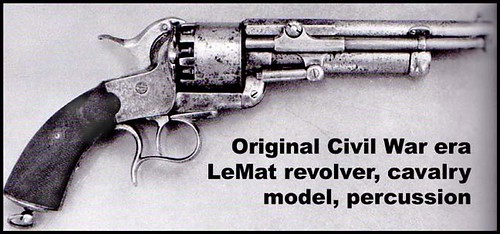




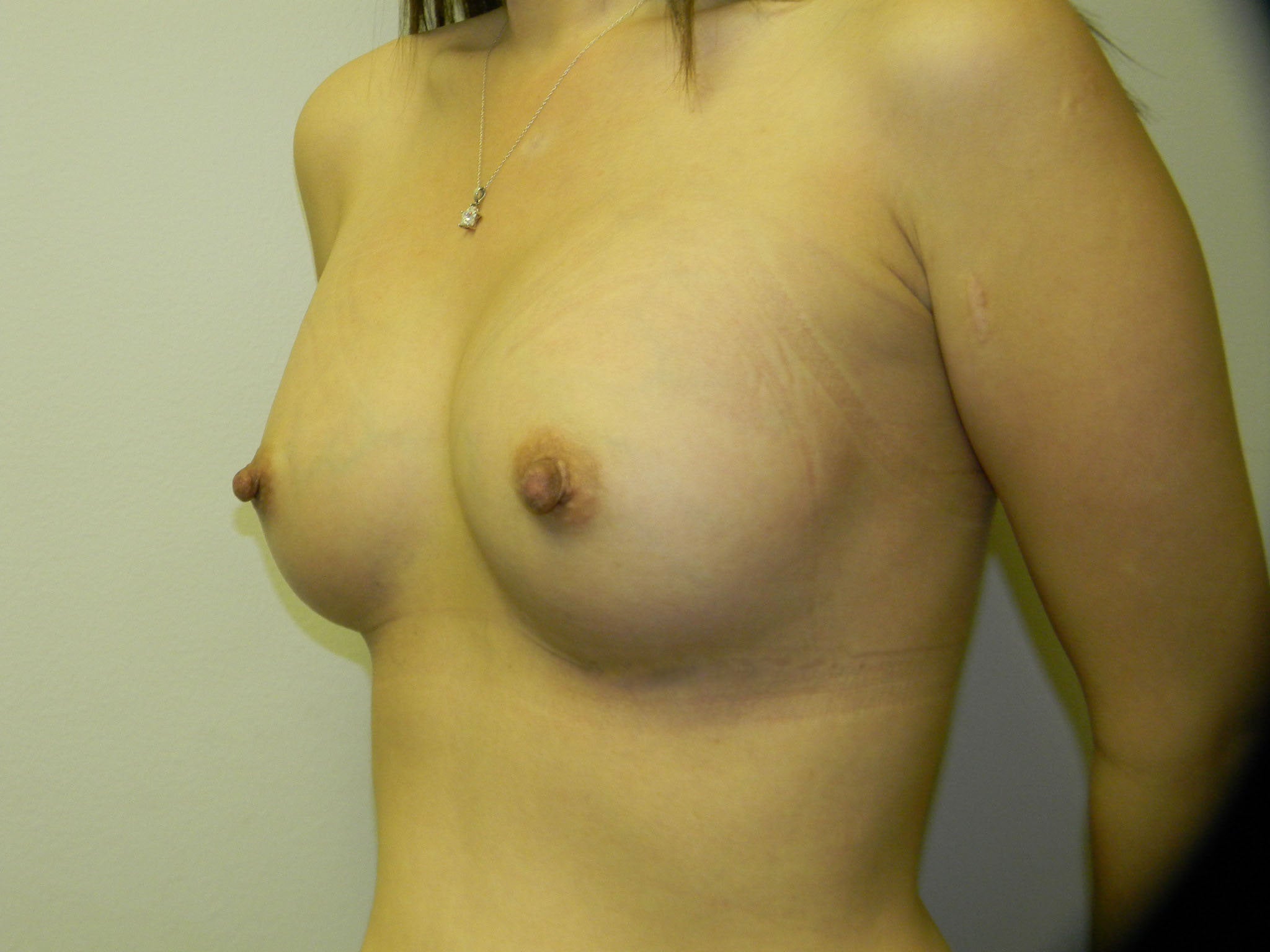 provinces, but not in Paris!). A "boyish figure" didn't actually become a mainstream fashion ideal until the 1920s.
provinces, but not in Paris!). A "boyish figure" didn't actually become a mainstream fashion ideal until the 1920s.






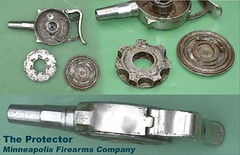
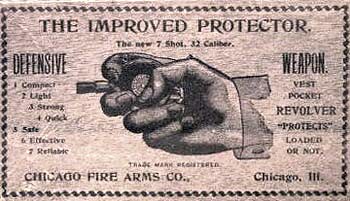
No comments:
Post a Comment